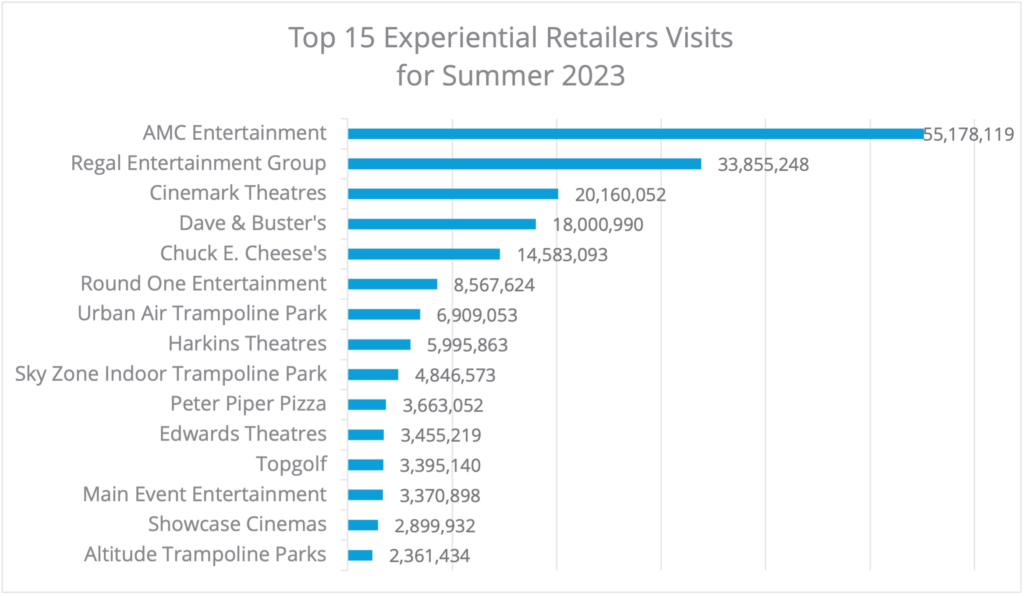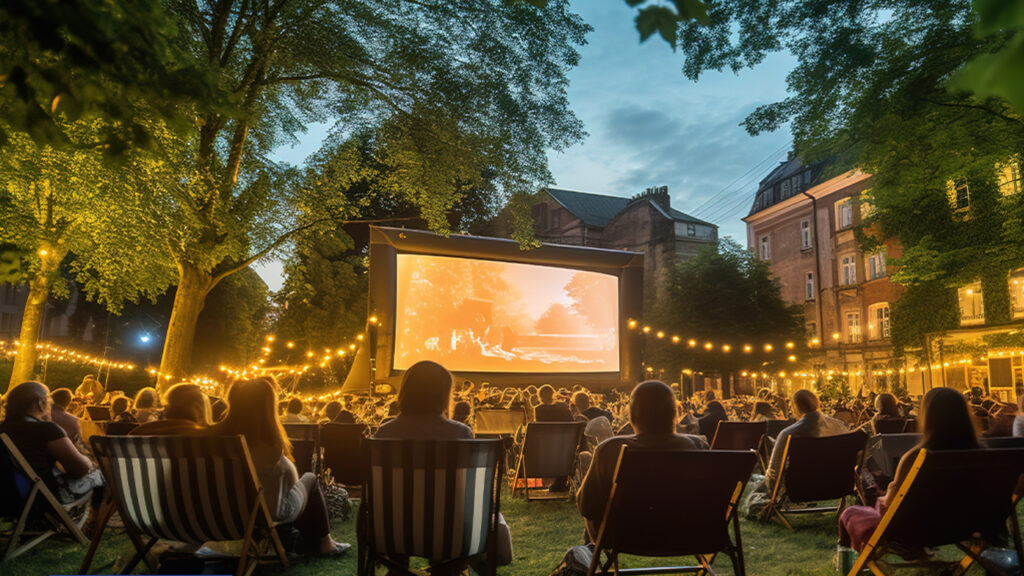With significant restrictions placed on services during the early periods of the pandemic, consumers shifted their energy towards the consumption of goods. However, since the second quarter of 2021, services have been the key driver of consumer spending as many retailers invited consumers to “do something” versus “buy something.” With service demand in overdrive, consumers have begun dipping into their savings to spend on services they missed out on during the pandemic.
Experiential retail, such as movie theatres, bowling alleys, trampoline parks, and discovery centers, peaked in the summer of 2022, averaging 106,275 visits. While the average visits in the summer of 2023 were down by nearly 16%, the average frequency continues to hover around four visits per summer season.
After a few up and down years due to the COVID-19 pandemic, movie theaters posted a strong show this past summer. With several major blockbusters released this past summer including Barbie, Openheimer, Spider-Man: Across the Spider-Verse, Fast X, The Little Mermaid, Mission: Impossible – Dead Reckoning Part One, some grossing over $100 million, visits to movie theatres accounted for 63% of total experiential visits., Additionally, National Cinema Day in August drew in 8.5 million admissions with $34 million in sales, an increase of 5% over 2022.

Consumers are increasingly interested in experiential retail because it allows them to escape the routine of everyday life and enter immersive worlds where shopping is just one facet of the adventure. Whether it’s themed retail spaces, interactive installations, live performances, or gamified shopping experiences, entertainment retail provides an opportunity to engage with products in a more playful, dynamic, and socially engaging manner.
The Gen Z consumer—the most connected demographic of our time regarding technology and social media—will continue to crave in-person experiences and interactions with brands and products. They have already come to expect an experiential component to retail, and technology used along the consumer journey will need to continue to be enhanced to keep up with the younger generation and their expectations.
In a digital age saturated with virtual experiences, entertainment retail bridges the gap between online and offline, offering consumers the chance to connect with brands tangibly and memorably, ultimately making shopping an entertaining pastime rather than a mere transaction. As consumer expectations continue to evolve, entertainment retail is poised to flourish as an enticing and innovative way to captivate and delight shoppers.

 Nicole Larson
Nicole Larson


 Aaron Jodka
Aaron Jodka
 Anjee Solanki
Anjee Solanki